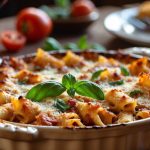
Doctor-Recommended Breakfast Foods and Recipes
Can we talk about how much time gets wasted on “breakfast magic” that’s just hype? But—there’s real evidence for some foods: oatmeal (steel cut, not the instant sugar bombs), avocado toast (not just a meme), and protein-loaded smoothies. These actually show up in dietitian surveys, not just influencer feeds. It’s not about fads; it’s about what keeps blood sugar steady and stops you from cramping up—assuming you even make it out of bed.
Overnight Oats and Steel Cut Oats
Mornings: me, staring at oats, again. Harvard Health blog basically says cereal bowls are dessert. Overnight oats let me pretend I’m organized: rolled oats (not instant), Greek yogurt, frozen berries because who can afford fresh every week? Steel cut oats are a hassle unless you use the Instant Pot—eight minutes, cinnamon, done. Supposedly, high-fiber oats can drop your LDL by 10% (Mayo Clinic says so, which is… a lot). Pumpkin seeds for magnesium—actually helpful, not TikTok nonsense. Milk swaps (oat, soy) don’t ruin the taste and keep me full. Those pre-packed oatmeal cups? Always taste like dust.
| Oats Type | Prep Time | Protein Add-ins |
|---|---|---|
| Overnight | 5 min (+ 6-8h fridge) | Greek yogurt, chia, seeds |
| Steel Cut | 8-10 min | Nuts, soy milk, fruit |
Avocado Toast Variations
No, I didn’t invent avocado toast. But when doctors say rye bread is worth it for magnesium (The Healthy backs it up), I listen. Rye, sprouted grain, sourdough—white bread? Only if I want a sugar crash. Smash avocado, maybe add poached eggs, and it’s actually filling.
Tomatoes if they’re not mushy. Microgreens, hemp seeds—sure, the crunch matters, and “anti-inflammatory” gets tossed around by dietitians enough that I half-believe it. Flavored cream cheese? Nah. Even the American Heart Association sticks to lemon, olive oil, black pepper. Sometimes I put cottage cheese on top—sounds weird, but it works.
| Toast Base | Toppings | Bonus Benefits |
|---|---|---|
| 100% rye | Avocado, eggs, microgreens, seeds | Extra magnesium, protein |
| Sourdough | Smoked salmon, radish, sprouts | Omega-3, fiber |
Smoothie Bowls and Protein Smoothies
And smoothies—why does everyone think blending fruit is a breakfast solution? Nutritionists are obsessed with smoothie bowls for a reason: you control the macros, get real nutrients, and maybe it looks nice (not that I care at 7 a.m.). One friend preps smoothie packs: oats, spinach, banana, whey, almond milk—done in 90 seconds. She’s always weirdly cheerful. Is it the smoothie? Who knows.
Protein’s non-negotiable if you work out or just want to avoid the vending machine. I switch between pea protein (my stomach’s friend) and Greek yogurt, plus frozen berries, nut butter, flax. Sometimes I throw in leftover steel cut oats because I hate wasting food. Doctors love to talk about “energy stabilization” and “muscle preservation,” but let’s be honest—convenience wins. Smoothie packs, portion cups, no mess, no excuses.
Don’t get me started on “detox” blends (please, just stop), but extra fiber from oats or chia? That’s actually backed by real studies—people stay full longer. Not just a lab thing.
Incorporating Power Ingredients for Lasting Energy
It’s honestly wild how just tossing together the right foods—bananas on whole grain toast, nut butters in smoothies, a random scoop of flax—sometimes wakes me up better than any alarm. And yet, people ignore these basics and wonder why they’re dead by 10:30. So, here’s me, spelling it out, minus the “superfood” nonsense.
Fruits and Antioxidants
“Antioxidants” gets tossed around everywhere. But the first time I heard an actual endocrinologist say, “Eat blueberries and greens before noon if you want energy,” it stuck. USDA says blueberries have up to 9,000 antioxidants per 100g. That’s not just trivia—it means less wear and tear on your cells, fewer energy dips. My med-school roommate put spinach in everything, and maybe that’s why she was always annoyingly perky. Bananas have B6 and potassium—so, yeah, less muscle fatigue, even if your “workout” is the subway stairs. I swapped out sugary bars for real berries, and my headaches disappeared. Coincidence? Maybe. I’m not testing it.
Chia Seeds and Flax Seed
Remember when every podcast screamed about omega-3s? Chia and flax are loaded with them. One tablespoon chia: almost 5g fiber, about 2,000 mg omega-3 ALA. Some hospital dietitians swear flax lignans help keep blood sugar steady. I swapped my usual cereal for Greek yogurt with chia and flax, and suddenly I wasn’t hungry till lunch. Eating plain flaxseed is weird, but sprinkled on toast, it’s just crunchy. Mayo Clinic has actual studies showing ground flax helps you stay full, so maybe that’s the trick behind all the hype.
Nut Butters and Almond Butter
I’ve tried every nut butter—peanut, almond, weird hazelnut ones. Peanut butter’s got 8g protein, healthy fats, and keeps me full till noon whether or not I packed lunch. Almond butter has 76mg magnesium per 2 tbsp (seriously), which apparently helps your muscles even if you’re just sitting in meetings. Some sports dietitian once told me to add nut butter to toast or oats to slow digestion and keep energy up. People say fats slow you down, but Harvard Health says nut fats regulate appetite. I mixed almond butter and banana on rye once—tasted odd, but my brain fog lifted. Sometimes, energy beats taste.



